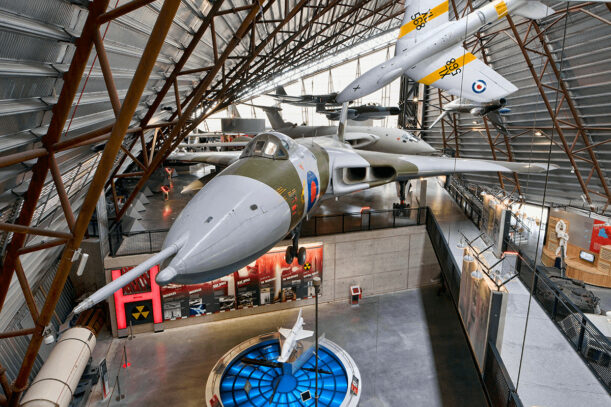Avro Vulcan B2
| Serial No: | XM598 |
| Period: | Post-WWII |
| Reference: | 84/A/1172 |
| Museum: | Midlands |
| Location: | National Cold War Exhibition |
| On Display: | Yes |
The Vulcan was the world’s first large bomber to employ a delta-wing form, which offers a unique combination of good load carrying capabilities, high subsonic speed at high altitudes and long range. After proving the design with the Avro 707 in 1949, the prototype Vulcan B1, fitted with Olympus engines, first flew on 30 August 1952. It is an enormous aircraft at 31m (102ft) in length and a wingspan of 30m (99ft).
The first production aircraft flew on 5 February 1955 and the second caused a sensation at the Farnborough Air Show by rolling during its demonstration. Vulcans first entered service in 1956 with No.230 Operational Conversion Unit at Waddington. The B2 version entered service on 1 July 1960 and was even bigger, with a 34m (111ft) wingspan and 32m (105ft) in length.
Following the transfer of the nuclear deterrent to the Royal Navy, the B2 was used for low-level tactical duties.
The Museum’s aircraft XM598 was selected as reserve aircraft for the bombing raids on Port Stanley airfield during the Falklands campaign and on six occasions was airborne heading for the Falklands. It was never needed since the primary aircraft was able to carry out the raid alone. It was chosen because it had originally been built to carry the Skybolt stand-off bomb and it proved very easy to adapt to carry anti-radar missiles and an Electronic Counter Measures pod. The mountings for these are still fitted under the wings.






